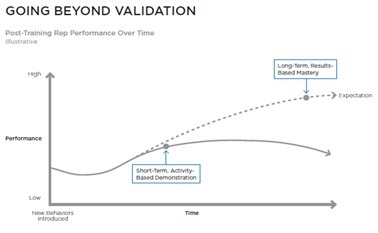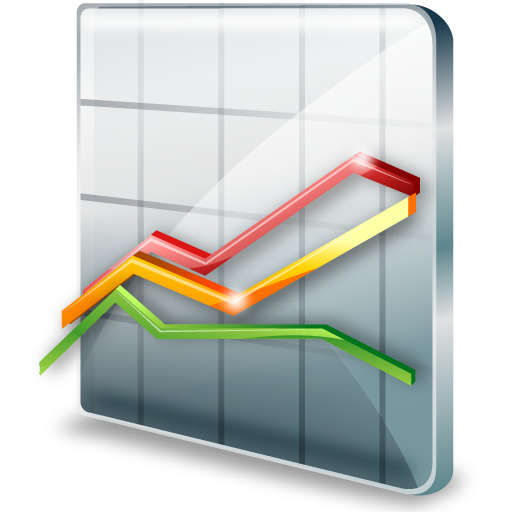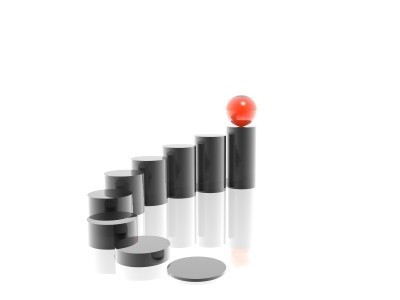Brent Adamson's Blog, page 13
May 20, 2013
What Salespeople Should Read This Summer
 For many of us, travelling is a year-round occurrence, as is reading. But, with summer approaching, comes the personal travel too. Why not share a few personal favorites from my summer reading list. Something to read when travelling to visit customers or meeting your internal team, or maybe at the pool or on the beach as you relax and unwind, and take in the warm weather.
For many of us, travelling is a year-round occurrence, as is reading. But, with summer approaching, comes the personal travel too. Why not share a few personal favorites from my summer reading list. Something to read when travelling to visit customers or meeting your internal team, or maybe at the pool or on the beach as you relax and unwind, and take in the warm weather.
Here are a few books I’ll be going back to and some new ones on my list. Oh, and fair warning – this isn’t just a list of business books; it’s a compilation of books, covering a variety of topics.
Freakonomics and Super Freakonomics (Steven D. Levitt and Stephen J. Dubner) – I’m guessing most, if not all of you, have read both of these books. But, how long ago? I recently came across a documentary on Freakonomics and realized it’s been awhile since I read it. So, I’m rediscovering them. And I forgot how interesting and surprising the stories and data are. As the author said in the documentary – if you want to understand people’s behaviors, understand their incentives. And who doesn’t want to relive what hurricanes, heart attacks, and highway deaths have in common?
Inferno (Dan Brown) – Dan Brown’s newest Robert Langdon adventure. I’m looking forward to where this one takes me. How about you?
Team of Rivals (Doris Kearns Goodwin) – Now that this was the basis of the movie, Lincoln, time to take a read or perhaps read it again. It’s a great insight into President Lincoln with plenty of takeaways for anyone, especially leaders. It’s just a bit on the longer side.
World War Z (Max Brooks) – A fun read about the war between humanity and zombies. Before the Walking Dead on AMC arrived and before this one became a soon-to-be Brad Pitt blockbuster, let your imagination run wild. Then maybe pick-up the Zombie Survival Guide, also by Max Brooks, so that you’re prepared to deal with them.
18 in America (Dylan Dethier) – It’s a non-fiction book written by a young man who heads out to play a round of golf in each of the 48 contiguous states. He does it after graduating high school, and puts off his college admission to do it (he’s in college now). Setting out in his Subaru, he manages to play the likes of Pebble Beach, TPC Sawgrass Stadium Course and others you’ve never heard of. But just as interesting, he also meets all types of Americans on his journey.
Let’s Explore Diabetes with Owls (David Sedaris) – This sounds like a great option when you could use a laugh and I’m pretty sure that’s most of us from time to time. It’s a collection of short stories. Amazon had it on their April 2013 list of best books of the month.
What reading would you recommend this summer?
May 14, 2013
Is Your New Hire a High Performer?
Sales organizations are increasingly turning to Insight Selling to cope with increased buyer sophistication and deal complexity. That said, our recent member survey finds that most sales leaders believe as much as one-third of their sales force does not have the potential to Insight Sell. This harsh new reality, coupled with an aging workforce of baby-boomers, means that sales organizations must urgently look for new sales talent to replace their often aging and/or unqualified sales force.
However, as our latest research finds, traditional recruiting efforts fall short in hiring sales talent that can successfully Insight Sell. Indeed, Insight Selling places new-in-kind demands on reps, such as the ability to deliver insight and exercise judgment in the sale. Not surprisingly, these skills differ from traditional selling skills, and are typically not screened for in recruiting efforts.
Our analysis finds the types of skills needed for Sales factor into two categories, influencing skills (EQ) and thinking and judgment skills (IQ). As the graph below shows, most salespeople peak high on EQ, but fall short on IQ, leaving many sales organizations with reps that are unable to exercise the required judgment and thinking skills necessary to create and deliver commercial insights.
 On the other hand, our data finds Challenger reps peak high in both IQ and EQ skills. That said, they are hard to find; in fact the data shows they only comprise 17.2 % of the global sales force.
On the other hand, our data finds Challenger reps peak high in both IQ and EQ skills. That said, they are hard to find; in fact the data shows they only comprise 17.2 % of the global sales force.
So, how does one find and attract sales talent that has both high EQ and IQ? Watch this space as we continue to explore the topic of how to source and attract Challenger reps.
CEB Sales Members, learn more about the new sales culture and the changing demands on reps to drive winning sales behaviors at one of our upcoming Executive Retreat or Regional Briefing sessions. Also, listen to the event replay to review the key findings from our 2013 research.
May 13, 2013
Get Your Salespeople to Listen
 The biggest challenge to communicating messages to the sales force is ensuring message absorption. While sales enablement and communication teams strive to constantly provide reps with the most up-to-date sales information, reps often complain about communication overload. In fact, reps are often overwhelmed with the number of channels used to communicate messages—struggling to sort through relevant information in weekly newsletters, narrowing down product specification updates, finding time for new product training communications, and preparing for quarterly town hall meetings.
The biggest challenge to communicating messages to the sales force is ensuring message absorption. While sales enablement and communication teams strive to constantly provide reps with the most up-to-date sales information, reps often complain about communication overload. In fact, reps are often overwhelmed with the number of channels used to communicate messages—struggling to sort through relevant information in weekly newsletters, narrowing down product specification updates, finding time for new product training communications, and preparing for quarterly town hall meetings.
In our recently completed research brief, Effective Communication to the Sales Force, we brought this common problem to five member organizations to identify potential strategies for managing communication to the sales force. We asked five main questions:
What are your primary modes of communication to sales reps?
Who designs, vets, and delivers your communications?
How do you tailor communication for different audiences within the sales rep community?
How do you measure the effectiveness of your communications?
What lessons have you learned from your experience communicating to the sales force?
All of the companies we spoke to use different channels to strategically emphasize different types of messages. Communication segregation by channel enabled companies to increase message clarity and reduce communication confusion. Companies also found that by streamlining the intake process, with an online form for example, communication was more easily filtered to the “need to knows.”
CEB Sales Members, check out the full report: Effective Communication to the Sales Force to maximize messages absorption and mitigate the risk of over-communication.
May 8, 2013
Your Sales Machine is Obsolete
In my last blog post, I introduced our newest research findings on sales culture, and how most sales organizations today have a sales culture or climate that is hindering their ability to build a Challenger sales force. Most sales leaders recognize that while traditional change management initiatives such as effective training, coaching, and communication campaigns are required to embed new behaviors, change is destined to fail if it’s not supported by the right sales environment.
In fact, when we asked reps what’s preventing them from adopting new sales behaviors; over half of them reported their operating environment or culture as the biggest inhibitor of behavior change. And when you look at the cartoon illustration below, it is easy to understand why.
 On the left is an illustration of sales leaders’ perspective on change: a big national sales meeting with all the bells and whistles (e.g., great inspirational speaker, maybe even the author of The Challenger Sale, new materials on the sales portal, exciting breakout sessions, and great training for reps and managers to come). If this sounds familiar, it’s because it represents how most sales organizations roll-out change initiatives. And for the most part, these are essential and effective strategies for driving change.
On the left is an illustration of sales leaders’ perspective on change: a big national sales meeting with all the bells and whistles (e.g., great inspirational speaker, maybe even the author of The Challenger Sale, new materials on the sales portal, exciting breakout sessions, and great training for reps and managers to come). If this sounds familiar, it’s because it represents how most sales organizations roll-out change initiatives. And for the most part, these are essential and effective strategies for driving change.
The key to understanding why sales culture inhibits change lies on the right hand side of the cartoon. When reps return to their desk following a great national sales kickoff, jazzed and excited to start Insight Selling, they are unfortunately confronted with the reality of their job and the excitement quickly fades. So, what causes the rep inertia we are all familiar with and the reversion to old sales behaviors?
It is the sales machine – or the operating environment that most sales organizations have built (for good reason) to run their operations in the most efficient and consistent manner possible. For decades sales leaders have been instituting rigorous sales metrics, that track seller activities, and perfecting the sales process to allow for maximum control of sales outcomes. But what we failed to recognize is how it feels for reps to have to operate, or try to change their behavior, when working in these highly transactional, activity-driven sales environments.
Our research shows that reps do buy the need for change conceptually, but they simply can’t enact it the change operationally. As the cartoon shows, when reps are bombarded with signals from the sales machine (e.g., pending funnel reports, manager weekly “pull-ups” to inspect deal progress, stack rankings, RPF responses, etc.) they have no option but to perform the activities the machine is designed to incentivize, and to continue to behave in the same way they have in the past.
What this simple cartoon implies, and what our research has exposed, is the big disconnect that exists today between the behaviors that sales leaders aim to drive in their sales organizations, and the sales culture in which those behaviors are expected to take place.
Stay tuned for our next post on the types of sales cultures that exist, and which one is most prevalent among sales organizations today.
CEB Sales Members, be among the first to know what our research says by registering now for an upcoming Executive Retreat or Regional Briefing session.
Share your thoughts with us, and let us know why you think driving sales transformation is difficult in today’s world.
May 7, 2013
3 Ways to Improve Sales Certification
 In most sales organizations, successful completion of training results in certification. That said, few reps demonstrate newly acquired skills consistently for it to translate to improved sales results. A key reason for this – most sales organizations approach certification as a one-time activity.
In most sales organizations, successful completion of training results in certification. That said, few reps demonstrate newly acquired skills consistently for it to translate to improved sales results. A key reason for this – most sales organizations approach certification as a one-time activity.
SLC research finds that most sales organizations certify reps based on short-term demonstrated behaviors through assessments or tests. But, short-term certification fails to ensure full adoption of new behaviors.
On the other hand, leading organizations implement long-term certification programs based on sustained behavior change. They do this in three ways:
Assess routine workflow for new skill demonstration: Certify reps if they demonstrate continuous use of newly learnt skills in their regular workflow, rather than at the end of the training. This ensures a robust understanding of new skills and its applications. For example, Electrolux certifies reps on both acquired and demonstrated skills, observed over a year.
Support proficiency-based skill achievement over time: Accommodate differential levels of learning by creating a proficiency-based certification system. This approach recognizes varied skill levels as well as pushes reps towards continuous improvement. For example, Britannia uses a Gold, Silver, and Bronze tiering system to assess manager skills and improvement areas over time. Interestingly, by regularly tracking skills and allowing for down-tiering from gold to silver or silver to bronze, Britannia ensures that newly learned skills and behaviors are consistently used by reps over a long period of time.
Seek customer sign-off on sustained impact: Evaluate the “true” value-added by reps by enrolling customers as “impact verifiers”. This helps quantify new skills application that drive customer impact. For example, Kennametal requires customers to sign-off on the level of savings a rep helps them realize—the higher the savings, the greater the incentive for rep.
Does your sales certification program include the training and validation of new or improved sales skills based on consistent application? Are you using any other methods to drive long-term certification?
SLC members, to learn more, visit our topic centers on Training and Coaching. Also, listen to the event replay on Challenger Skills Adoption: Driving Long-Term Behavior Change.
April 30, 2013
Motivate Your Reps to Learn…With Gamification
 Increasingly, organizations are pairing gamification with traditional sales training efforts to reinforce particular skills and knowledge. Using the principles of traditional games in real-world situations, a sales force is more engaged in the training, retains more information, and understands the application of what they are learning. Currently gamification is often used to increase a seller’s market and product knowledge and to practice particular skills, such as tailoring insight and creative thinking.
Increasingly, organizations are pairing gamification with traditional sales training efforts to reinforce particular skills and knowledge. Using the principles of traditional games in real-world situations, a sales force is more engaged in the training, retains more information, and understands the application of what they are learning. Currently gamification is often used to increase a seller’s market and product knowledge and to practice particular skills, such as tailoring insight and creative thinking.
Gamification is particularly effective because it incorporates real-time feedback and provides a combination of intrinsic and extrinsic motivation to the sales force. Unlike so many real-world situations, in which actions go unnoticed or unrewarded, in the context of a game, proper action or answers can be celebrated. Similarly, when individuals incorrectly answer a question or apply a skill, they can receive constructive feedback to improve future efforts. This aspect allows sellers to think about effective application of new knowledge and skills in the context of actual situations they may encounter.
The opportunities for competition, mastery, and recognition in gamification incentivize reps to engage with and participate in the training. Often, the game platforms have a variety of public leaderboards that display the top players and their scores. This visibility cultivates internal (fun) competition within the sales force around the particular game and also identifies those that have mastered specific content for the rest of the sales force to learn from. Since much of these games’ content is skill or knowledge-based and the platform allows individuals to track their success, gamification allows individuals to achieve mastery and to also compete against themselves.
Similarly, the embedded rewards and recognition within the games, such as badges and progress paths, break down larger concepts into manageable pieces for reps to learn, while also reinforcing individual’s sense of mastery. In order for games to be effective, it is critical that the sales force is engaged when playing and eager to play again. By creating internal competition and the opportunity for mastery, participants invest in the game, putting forth effort, engaging with the content, and continuing to play.
In addition to effectively teaching the sales force new concepts, knowledge, and skills, the organization is also able to track individual levels of progress and mastery due to the transparent nature of gamification. With this insight, leaders can make more informed decisions about the composition of sales teams and can identify those to serve as mentors or models of proficient behavior.
SLC Members: To learn more about how to create sales training stickiness, read the key findings from the study, Get Your Sales Training to “Stick”, and visit the Talent Development topic center.
April 29, 2013
What Leaders Don’t Say, But Reps Hear
 While most sales leaders recognize that communication is an integral part of any strategy, exclusionary focus on the ‘message’ may have unintended consequences. Such intensity around the content narrative and distribution channels internally can often obscure the implicit messages leaders also send.
While most sales leaders recognize that communication is an integral part of any strategy, exclusionary focus on the ‘message’ may have unintended consequences. Such intensity around the content narrative and distribution channels internally can often obscure the implicit messages leaders also send.
Leaders impact their organization through both implicit and explicit messages and when those messages are not coherent or consistent at best it muddies the waters and at worst creates dissonance and disengagement. It is important that leaders think through the symbolic value of their actions that ground the climate they hope to engender, as they set the tone for the rest of the organization.
The best leaders deliberately use both formal and informal cues to influence their teams and set the tone of their organization. Most leaders do not consider the unintended consequences of the signals they send that may undermine or contradict the goals they are attempting to achieve. For example, in order to foster competition and drive higher productivity a leader may publish activity stack rankings, not realizing that a rep walks away with the message that the company prioritizes quantity over quality.
This is true at all levels within the organization. Managers who venerate Challenger Selling but reduce the levels of discretion a rep has to pursue unconventional opportunities will, in the long term, find high levels of efficiency but low levels of efficacy.
Each message, implicit and explicit, contributes to the development of a specific kind of selling environment that infuses all the actions reps take, and ultimately their success in the marketplace.
SLC Members, learn the right kind of environment necessary to foster Insight Selling behavior: register for our upcoming webinar Empowering Reps to Sell to Empowered Customers.
April 23, 2013
Measuring the ROI of Your CRM
 A CRM system is not only an integral part of the sales workflow, but is the lifeblood of the sales process, providing reps with the right information for the right customer at the right time.
A CRM system is not only an integral part of the sales workflow, but is the lifeblood of the sales process, providing reps with the right information for the right customer at the right time.
The deep integration of CRM with the sales process has led some executives to take CRM for granted. Yet, these systems require huge yearly investments, and should be subject to the same scrutiny as any other investment. However, “How do you track the ROI of your CRM?” is a question no Sales Ops executive wants to, or can easily answer.
Such was the case when we took this question to four member organizations. Most of the conversations began with a laugh or a sigh as we proceeded to uncover the complexities of each members’ processes of tracking and reporting the various elements of their CRM. We asked four main questions:
What CRM do you use, since when, and why?
Does your organization formally track and report on the ongoing value of your CRM system?
In what informal ways does your organization measure the ongoing value of your CRM system?
What benefits has your organization realized from CRM implementation?
None of the companies we spoke with formally track the ROI of their CRM. While increases in business metrics could be seen parallel to a CRM implementation or enhancement, there was no proven correlation between CRM and business performance. Instead, the way companies sought to measure their CRM’s effectiveness was through tracking adoption and utilization metrics.
Only with high levels of adoption could any potential benefits or enhancements of the CRM be realized and applied to produce growth. These benefits can be largely subjective but ranged across business units to help with internal collaboration and visibility, sales process efficiency, and rep mobility.
SLC Members, check out the full report: Tracking the Ongoing ROI of a CRM system and use the profiles to validate or compare your organizations CRM processes and benefits. Also, review the CRM Topic Center for best-in-class practices on driving CRM adoption.
April 22, 2013
How to Create a Challenger Ecosystem
 The world of Sales is changing. The amount of time reps get to spend with customers is decreasing. The time to engage with customers is moving later and later in the purchase decision. The speed of commodification is increasing and margins are shrinking all the time. High performing reps are able to keep up with these changes, but what about core reps?
The world of Sales is changing. The amount of time reps get to spend with customers is decreasing. The time to engage with customers is moving later and later in the purchase decision. The speed of commodification is increasing and margins are shrinking all the time. High performing reps are able to keep up with these changes, but what about core reps?
Sales enablement leaders are struggling to match the pace of rep development with these changes in the buying world. The difficulty is not a lack of support to offer; rather, there is so much to do, it is hard to know where to begin. There is new technology to offer: sales portals, iPads, Chatter feeds, social selling to name a few. There are new training initiatives for skills and product knowledge as well as professional development. It can all be overwhelming.
In our Challenger skills adoption workshops we recommend beginning with a specific set of questions:
Do we have a rationalized set of tools that help reps sell at each stage of the buying process? Do we have a sales academy or university that ties together the skills and knowledge we think reps require to succeed at their jobs? Do we have a certification program that expects long-term demonstration of skill mastery for both reps and managers?
Do we think of how all these things fit together as one?
We recommend taking a step back to think about enablement as creating an ecosystem in which each activity adds to and supports the next, magnifying the value in an additive way. In reality you likely have most of the tools and support you need, but may not be deploying in the most effective way. Use your competency model as a basis and map how your tools and resources support the skills and activities your reps need to develop.
SLC Members: Register for an upcoming Challenger Skills Adoption Workshop, or listen to a webinar replay on Challenger Skills Adoption: Driving Long-Term Behavior Change.
April 16, 2013
Why You Should Question Your Sales Culture
 Today, more than ever before, sales organizations are embracing change. Whether on a journey from product selling to solution selling, or on a transformation to build a Challenger organization, most of us are implementing changes to cope with increasingly informed buyers.
Today, more than ever before, sales organizations are embracing change. Whether on a journey from product selling to solution selling, or on a transformation to build a Challenger organization, most of us are implementing changes to cope with increasingly informed buyers.
SLC’s research is helping sales organizations avoid being commoditized and to break away from the price-driven sale by identifying the winning sales behaviors for this new era of selling, outlining effective messaging strategies, and identifying best-in-class stakeholder management tactics.
However, in our conversations about successful transformation strategies with sales leaders around the world, we noticed that an area that is rarely talked about is that of sales culture. We all know that culture matters, and yet very few leaders are deliberately shaping the culture of their sales organizations to enable the behaviors that they strive to drive. So, can long-lasting sales transformation changes stick in organizations that do not also transform their culture? And, can sales culture be changed anyway?
That is the question that our newest 2013 research study Driving Sales Transformation: Empowering Reps to Sell to Empowered Customers, set out to answer. (CEB Sales Members, be among the first to know what our research says by registering now for an upcoming Executive Retreat or Regional Briefing session).
Here is a preview of what we found:
Sales culture is different – unlike your company’s “corporate culture,” or the set of deeply held beliefs and assumptions that employees at your company have, which is hard to influence and evolves slowly over time; the culture of your sales organization (what we call organizational climate) can be influenced.
Climate is controllable – sales leaders, through explicit and implicit actions influence the climate of the sales function, or the shared perceptions that sales employees have about the work they collectively do every day. Sales climate is local and operational in nature, and therefore requires less time to change.
There is a Micro and a Macro sales climate – individual sales managers create micro sales climates (or team cultures) that exist within a larger sales force macro climate. While sales leaders set a tone for the sales organization’s macro climate, managers have a lot of influence over the climate or team culture that reps experience.
Most importantly, our research clearly showed that in the absence of the right sales climate, organizations looking to drive transformational change will not only waste valuable resources on initiatives that yield low ROI, but risk being relegated to price wars and become outcompeted by market players who can effectively sell to informed customers.
CEB Sales Members, learn more about the sales culture that your organization needs to have in order to drive winning sales behaviors in our upcoming webinar introducing you to the key findings from our latest research.
Brent Adamson's Blog
- Brent Adamson's profile
- 9 followers



